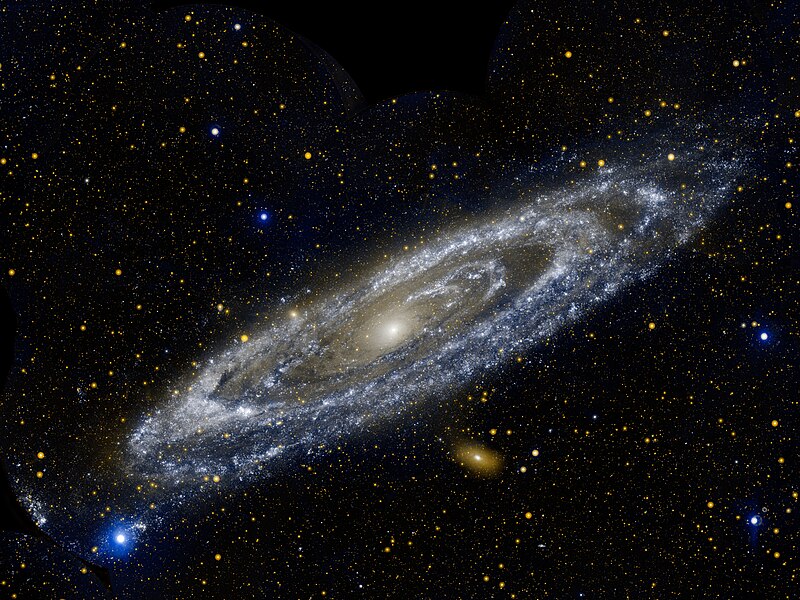Imachen:Andromeda galaxy 2.jpg

Grandaria d'ista previsualización: 800 × 600 pixels. Atras resolucions: 320 × 240 pixels | 640 × 480 pixels | 1024 × 768 pixels | 1280 × 960 pixels | 2560 × 1920 pixels | 6000 × 4500 pixels.
Fichero orichinal (6000 × 4500 píxels; grandaria d'o fichero: 21,44 MB; tipo MIME: image/jpeg)
Historial d'o fichero
Punche en una calendata/hora ta veyer o fichero como amaneixeba por ixas envueltas.
| Calendata/Hora | Miniatura | Dimensions | Usuario | Comentario | |
|---|---|---|---|---|---|
| actual | 10:09 21 may 2012 |  | 6000 × 4500 (21,44 MB) | Originalwana | {{Information |Description ={{en|1=Hot stars burn brightly in this image from NASA's Galaxy Evolution Explorer, showing the ultraviolet side of a familiar face. At approximately 2.5 million light-years away, the Andromeda galaxy, or M31, is our [[:C... |
Uso d'o fichero
A pachina siguient emplega iste fichero:
Uso de fichers globals
Os siguients wikis fan servir iste fichero:
- Uso en af.wikipedia.org
- Uso en ar.wikipedia.org
- Uso en bg.wikipedia.org
- Uso en de.wikipedia.org
- Uso en de.wikibooks.org
- Uso en en.wikipedia.org
- Uso en eu.wikipedia.org
- Uso en fr.wiktionary.org
- Uso en hr.wikipedia.org
- Uso en it.wikipedia.org
- Uso en ja.wikipedia.org
- Uso en ko.wikipedia.org
- Uso en lb.wikipedia.org
- Uso en lv.wikipedia.org
- Uso en no.wikipedia.org
- Uso en pl.wiktionary.org
- Uso en pt.wikipedia.org
- Uso en ro.wikipedia.org
- Uso en scn.wikipedia.org
- Uso en sh.wikipedia.org
- Uso en simple.wikipedia.org
- Uso en sr.wikipedia.org
- Uso en sv.wikipedia.org
- Uso en ta.wikipedia.org

